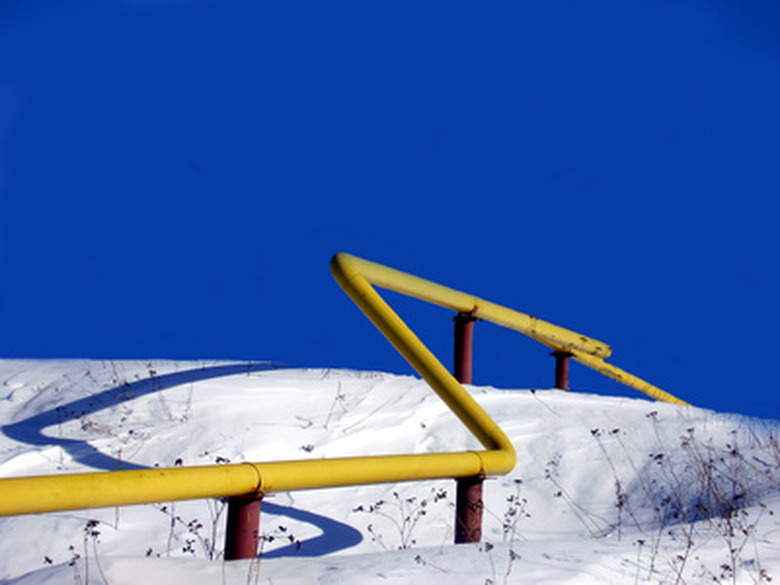How To Pressurize Natural Gas Pipelines For Leak Detection
Testing natural gas pipelines is serious business, because explosions can unleash tremendous power. Periodic testing reduces the risk of pipeline failure. The regulations that dictate line testing vary from state to state. Be sure to check with local and state officials in your area. You should consult the American Petroleum Institute's guidelines as well as the National Fire Prevention Association's tips for performing this type of work. You may wish to hire a professional.
Step 1
Ensure pipelines are secured and natural gas flow is turned off.
Step 2
Secure all pumps with locks to ensure lines can't transfer gas.
Step 3
Check with operating personnel to ensure lines are sealed and valves are closed.
Step 4
Attach hoses from nitrogen tanks to pipelines using supplied test ports on the pipelines.
Step 5
Fill the lines using nitrogen to recommended pressure. This will vary according to pipeline type and material.
Step 6
Soap all joints to check for loss of nitrogen. Bubbles will occur if joints are not tight.
Step 7
Check gauges periodically to ensure the pressure in the pipeline has not fallen.
Step 8
Allow recommended time to elapse to ensure that the pressure remains constant in the lines.
Step 9
Release pressure in pipelines gradually.
Step 10
Remove hoses and gauges.
Step 11
Remove all locking devices.
Step 12
Restore lines to service if testing was positive.
Things Needed
- Various tools and wrenches
- Pressure gauges
- Brushes and soapy water
- Nitrogen tanks
- Hoses and fittings
- Lock out / Tag out kit
Warning
Natural gas is very flammable. Explosions may occur. You should consult a professional testing company to provide this service.
Cite This Article
MLA
ScottS, . "How To Pressurize Natural Gas Pipelines For Leak Detection" sciencing.com, https://www.sciencing.com/how-to-pressurize-natural-gas-pipelines-for-leak-detection-13649424/. 26 September 2017.
APA
ScottS, . (2017, September 26). How To Pressurize Natural Gas Pipelines For Leak Detection. sciencing.com. Retrieved from https://www.sciencing.com/how-to-pressurize-natural-gas-pipelines-for-leak-detection-13649424/
Chicago
ScottS, . How To Pressurize Natural Gas Pipelines For Leak Detection last modified March 24, 2022. https://www.sciencing.com/how-to-pressurize-natural-gas-pipelines-for-leak-detection-13649424/
